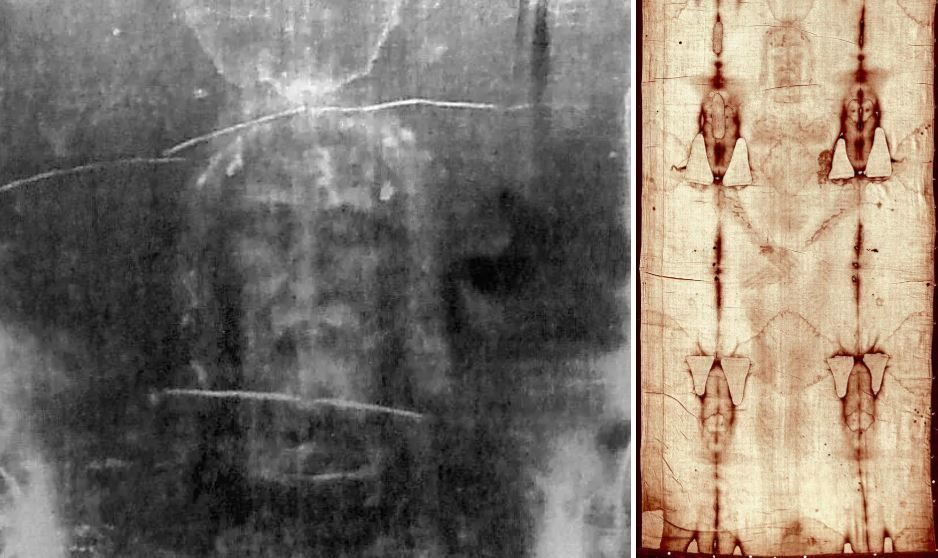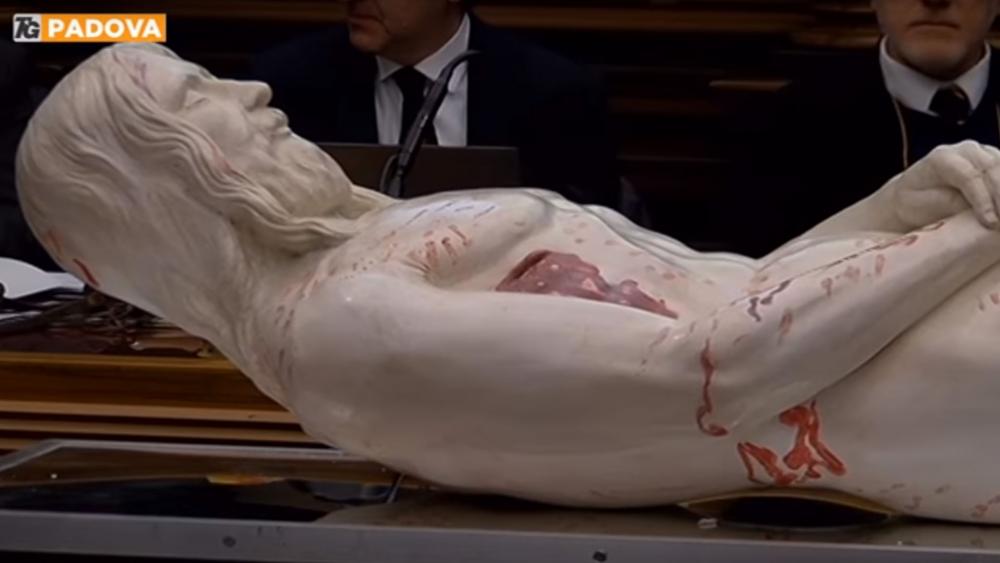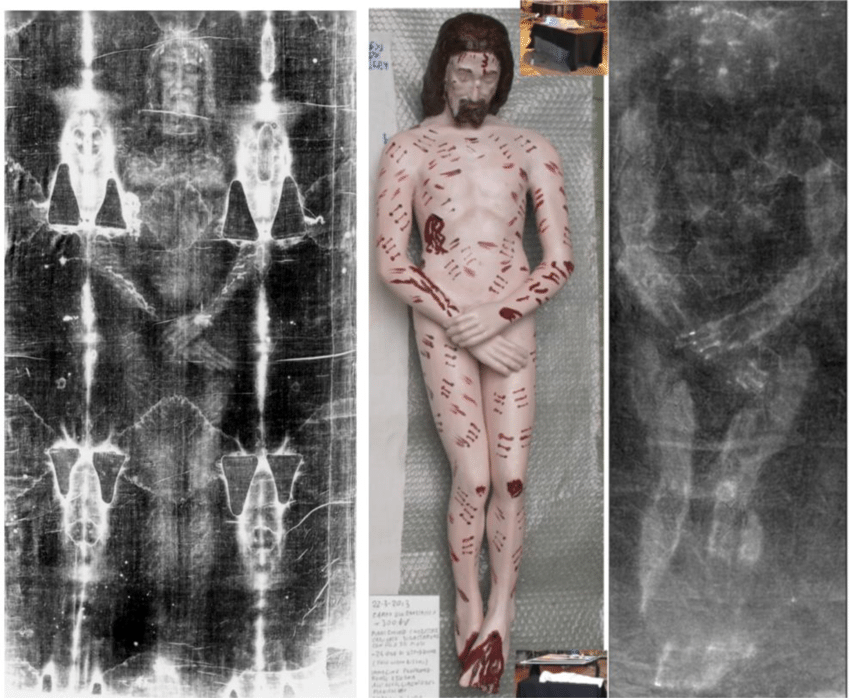

Notice how Jesus covers his groin. How appropriate.
The image was found to have paint particles.
Carbon 14 dating placed the cloth being from the 14th century.
INCIDENTALLY THERE ARE 26 “AUTHENTIC” SHROUDS OF TURIN IN EUROPE.
This shroud contradicts the New Testament Gospel accounts of way Jesus is described to be wrapped with multiple cloths and a napkin placed over his face.




The iconic Shroud of Turin is a 14-foot linen cloth bearing front & back images of a severely beaten and crucified man who stood 5′ 10″ (tall for that era). It is believed by the faithful to be the actual burial shroud of Jesus Christ. In the West, it was first presented to a local church during the 1350s by a French knight. There is no record of where the shroud was during the 1300 years since Christ’s burial outside Jerusalem — though the best theory (based on forensic analysis of pollen particles from the shroud) would be that it was kept in Constantinople until the Catholic army’s “4th Crusade” sack of the Eastern Orthodox city — and before that, located in Jerusalem.
Worried that the shroud could turn out to be fake, the official position of Pope Clement VII and the Catholic Church at that time was to declare it to be an artistic relic, but not a holy icon — a fact which debunkers will often cite, but which fails to take into account the fact no one then, nor to this day, has been able to explain how the haunting image and blood stains got into the fabric.
In 1532, a fire broke out (or was set?) in the chapel where the shroud had been moved to. It melted part of the silver in the container housing the shroud — dripping molten metal on the sides of the cloth. Some of the damaged area was replaced and stitched together by nuns, but the burn marks and the extinguishing water stains remain visible on the shroud today.
In 1578, the shroud was again moved — to the Cathedral of Saint John the Baptist in the city of Turin — which later became part of Italy. It has remained there ever since, with the exception of World War II, when it was relocated to protect it from American bombardment. There was another fire in 1997 which required the shroud to be saved (Satanic arson, I bet).
Going on seven centuries now, the debate about its authenticity continues — especially since an accidental discovery in 1898. That year, an Italian photographer was shocked to discover that the negative image of the shroud yielded a much clearer positive (possibly indicating that the original image itself is the photographic negative). Ever since, both deniers and believers have sought to bolster their arguments with intensive scientific studies utilizing forensic technologies not available in centuries gone by.
1. A portrait of the unfolded shroud from 1578 — when it was first brought to Turin. // 2. Cautious Clement wasn’t quite buying it — and in fact, the Catholic Church has always taken a surprisingly objective and non-dogmatic position regarding the question of authenticity.
In 2019, it required a lawsuit and a court-order for a team of secular Oxford scientists to finally access the original 1988 data compiled by an earlier team of scientists whose work led to the publication of a much-publicized “debunking” article in the journal, Nature. After the British Museum was forced to release the data, the Oxford team scientifically ruled out the 1988 findings.
The carbon-dating “debunk” of 1988 turned out to be hasty (if not rigged) conclusion based on contaminated and repaired (from the 1592 fire) samples of the cloth. We have learned of many cases of erroneous carbon-dating — such as a known 1000-year old Viking artifact dating back only to the 1980s.
In addition to the 1352 fire which damaged the shroud, there was another horrible FIVE HOUR fire which — were it not for the heroic efforts of an Italian firefighter — would have destroyed the cloth in 1997.